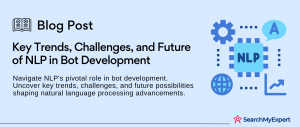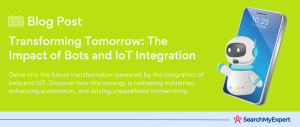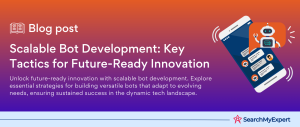Understanding Chatbots: The Rise of Conversational AI
In recent years, the digital landscape has seen a monumental shift with the advent of chatbots, a form of conversational artificial intelligence (AI) that has fundamentally changed how businesses and consumers interact. At their core, chatbots are AI-driven programs designed to simulate human-like conversations with users, either through text or voice interactions. They’re employed across a myriad of platforms – from websites and social media to customer service and messaging apps.
The proliferation of chatbots can be attributed to advancements in AI and machine learning, allowing them to provide more accurate, human-like responses. They are increasingly used in various domains, including customer service, e-commerce, healthcare, and entertainment, offering a seamless, 24/7 communication channel. By handling routine inquiries, providing product recommendations, and even supporting mental health, chatbots are becoming an integral part of the modern digital experience.
The Crucial Role of User Engagement in Chatbot Interactions
User engagement stands as a pivotal element in the success of chatbot interactions. Engaging chatbots not only enhances user experience but also plays a critical role in retaining customers and building brand loyalty. An engaged user is more likely to return, make purchases, and recommend the service to others.
Effective chatbots achieve this by offering personalized experiences, understanding and anticipating user needs, and providing quick and accurate responses. They also need to have a conversational tone that resonates with the user, adding a human touch to digital interactions. The goal is to create a chatbot experience that is not just functional but also enjoyable and memorable.
Challenges in Keeping Users Engaged with Chatbots
Despite their growing popularity, keeping users engaged with chatbots poses several challenges. One major hurdle is the limitation in understanding natural language. While AI has come a long way, chatbots sometimes struggle with complex queries, slang, or nuances in language, leading to frustrating experiences for users.
Another challenge is maintaining a conversational flow that feels natural and human-like. Users tend to disengage with chatbots that provide robotic or irrelevant responses. Ensuring that the chatbot can handle a wide range of topics and switch contexts smoothly is crucial for sustained engagement.
Additionally, privacy concerns can also impact user engagement. Users are becoming increasingly aware of their digital footprint and the use of their personal data. Ensuring transparency and security in how chatbots collect and use data is essential in building trust and keeping users engaged.
Identifying User Personas and Goals in Chatbot Interactions
To create an effective chatbot, it’s crucial to understand the different user personas and their specific goals. User personas are fictional characters that represent the various types of users that might interact with a chatbot. These personas help in anticipating the needs, goals, and behavior patterns of real users.
- The Information Seeker:
This persona uses chatbots for quick information, like checking the weather, news updates, or flight statuses. They value accuracy and speed. - The Shopper: Looking for product recommendations, comparisons, or tracking orders, these users expect the chatbot to assist in a seamless shopping experience.
- The Support Seeker: They turn to chatbots for help with issues like troubleshooting a product or service. Patience and clear guidance are key for these users.
- The Casual User:
Often interacting out of curiosity or for entertainment, these users test the chatbot’s capabilities and expect a conversational and engaging experience.
Understanding these personas helps in tailoring chatbot interactions to meet varied expectations effectively.
Analyzing User Expectations and Pain Points in Chatbot Conversations
Users come with a set of expectations when interacting with chatbots, and failing to meet these can lead to dissatisfaction. Common expectations include:
- Speed and Efficiency: Immediate responses and quick resolutions.
- Accuracy and Relevance:
Correct and pertinent information. - Human-like Interaction:
A conversational tone that doesn’t feel too robotic. - 24/7 Availability: Constant access, especially for global users in different time zones.
Pain points often revolve around:
- Misunderstanding Queries: Inability of the chatbot to comprehend complex or nuanced language.
- Limited Functionality:
A narrow range of topics or actions the chatbot can handle. - Lack of Personalization: Generic responses that don’t consider the user’s history or preferences.
- Privacy Concerns:
Uncertainty about how personal data is used and stored.
Addressing these expectations and alleviating pain points is essential for a positive chatbot experience.
The Importance of User Empathy and Designing for Inclusivity
Empathy in chatbot design means understanding and anticipating the feelings and contexts of users. It involves recognizing the diverse range of users and ensuring the chatbot is accessible to everyone, including those with disabilities. Inclusive design includes features like voice-to-text for users with physical disabilities or ensuring chatbots understand various dialects and languages for non-native speakers.
User empathy also involves recognizing emotional states and responding appropriately. For instance, if a user expresses frustration, the chatbot should acknowledge it and possibly escalate the issue to a human agent.
Crafting a Clear and Concise User Flow in Chatbot Interactions
Designing an effective user flow is the foundation of creating a chatbot that efficiently guides users toward achieving their specific goals. A user flow is a visual representation of the steps a user takes during interaction with a chatbot. Here’s how to craft it:
- Define the Goals: Clearly identify what the user and the business aim to achieve through the chatbot interaction. This could range from completing a purchase to getting customer support.
- Map Out the Journey: Break down the interaction into a series of steps from the user’s perspective. This includes their initial query, the chatbot’s responses, and the final resolution.
- Simplify the Path: Ensure the steps are intuitive and straightforward. Avoid complex paths that could confuse the user.
- Anticipate Variations: Plan for different user responses or behaviors. The chatbot should gracefully handle unexpected inputs without derailing the conversation.
- Incorporate Feedback Loops: Allow users to provide feedback or backtrack if they want to change their query or are not satisfied with the responses.
A well-crafted user flow enhances the efficiency of the chatbot, ensuring users reach their desired outcomes quickly and smoothly.
Designing Natural and Engaging Dialogue Flows
The essence of a successful chatbot lies in its ability to simulate human-like conversations. Here’s how to design engaging dialogue flows:
- Use Natural Language:
The chatbot’s language should be conversational, clear, and easy to understand. Avoid jargon or overly technical terms unless appropriate for the audience. - Contextual Understanding:
The chatbot should maintain context throughout the conversation, referencing previous parts of the dialogue when necessary. - Dynamic Responses: Instead of static, scripted responses, the chatbot should generate dynamic replies based on user input, creating a more personalized experience.
- Error Handling:
Design the dialogue flow to handle misunderstandings or misinterpretations gracefully. The chatbot should guide users back on track without frustration. - Conversational Cues: Include pauses, acknowledgments, and transitional phrases in the chatbot’s responses to mimic natural speech patterns.
Engaging dialogue flows are key to making users feel like they are conversing with a human, not just interacting with a program.
Integrating Humor, Wit, and Personality
Adding humor, wit, and personality can significantly enhance the user experience. However, this should be done thoughtfully:
- Understand the Audience:
The style of humor or personality should align with the audience’s preferences and the context of the conversation. - Subtlety is Key:
Humor should be subtle and not overshadow the primary function of providing information or assistance. - Cultural Sensitivity: Be aware of cultural differences in humor to avoid misunderstandings or offense.
- Consistent Personality: The chatbot should have a consistent tone and personality throughout the conversation, reflecting the brand’s voice.
- Avoid Overuse:
While humor can make interactions more enjoyable, overusing it can be distracting or annoying for users seeking quick answers.
Integrating these elements into a chatbot’s responses can make interactions more delightful and memorable, enhancing user engagement and satisfaction.
Implementing Natural Language Processing (NLP) for Accurate Understanding
Natural Language Processing (NLP) is a critical component in conversational AI, enabling chatbots to comprehend and interpret human language effectively. Here’s how NLP is implemented:
- Language Understanding: NLP allows the chatbot to parse user input, breaking down sentences into understandable segments and analyzing the intent and entities (like time, location, or specific objects).
- Contextual Analysis: It helps in understanding the context of a conversation, ensuring the chatbot can follow along with the user’s train of thought and maintain a coherent dialogue.
- Continuous Learning: NLP-equipped chatbots learn from each interaction, improving their language understanding capabilities over time, and adapting to new phrases or colloquialisms.
- Handling Ambiguity:
NLP allows the chatbot to manage ambiguous language or phrases, asking clarifying questions when necessary to ensure accurate understanding.
Implementing NLP results in a more intuitive and human-like interaction, as the chatbot can accurately understand and respond to user inputs.
Leveraging AI and Machine Learning for Personalized Interactions
Artificial Intelligence (AI) and Machine Learning (ML) are the driving forces behind personalized chatbot interactions. Here’s how they’re utilized:
- Data Analysis: AI analyzes user data (like past interactions, preferences, and behavior) to tailor responses and recommendations.
- Predictive Responses: Machine learning algorithms can predict user needs and preferences, offering proactive suggestions or assistance.
- Adaptive Learning:
The more a user interacts with the chatbot, the more the AI learns about their preferences, allowing for increasingly personalized and relevant responses. - Pattern Recognition:
AI identifies patterns in user interactions, which can be used to refine the chatbot’s responses and improve its accuracy and relevance over time.
Using AI and ML, chatbots can deliver highly personalized experiences, making users feel understood and valued, which is key to engagement and satisfaction.
Employing Active Listening Techniques for Context-Aware Dialogues
Active listening in chatbots mirrors the active listening skills used in human conversations. It involves:
- Acknowledgment: The chatbot should acknowledge user inputs, showing that it has understood the query or statement.
- Clarification:
When necessary, the chatbot should ask for clarification to avoid misunderstandings, ensuring the conversation stays on track. - Summarization:
The chatbot can occasionally summarize the conversation to ensure both parties are on the same page, especially in complex or lengthy interactions. - Context Retention:
Remembering details from earlier in the conversation (or from previous interactions) to maintain a continuous, context-aware dialogue.
Implementing active listening techniques makes the conversation flow more naturally and helps build a rapport with users, enhancing the overall user experience with the chatbot.
Offering Proactive Prompts and Suggestions
To ensure users remain engaged and to prevent drop-offs in chatbot conversations, proactive prompts and suggestions play a crucial role. Here’s how to effectively integrate them:
- Anticipatory Guidance: Based on the user’s input and the conversation’s context, the chatbot should offer relevant suggestions or guidance for the next steps.
- Conversation Triggers: Implement triggers that prompt the user with options or questions when there is a pause in the conversation, keeping the interaction alive.
- Predictive Assistance:
Utilizing predictive analytics, the chatbot can offer help or suggestions before the user explicitly asks for them, based on the user’s previous interactions and preferences. - Tailored Recommendations:
Offering personalized recommendations keeps the conversation relevant and engaging, encouraging users to continue the interaction.
Proactive prompts and suggestions help in steering the conversation forward, reducing the chances of user drop-off and maintaining a smooth user experience.
Integrating Interactive Elements for Engagement
Interactive elements such as quizzes, polls, or games can significantly enhance user engagement in chatbot conversations. Here’s how they can be integrated:
- Quizzes and Polls: Incorporating quizzes or polls relevant to the user’s interests or needs can make the interaction more engaging and gather valuable user insights.
- Gamification:
Adding game-like elements, such as earning points or rewards for interacting with the chatbot, can make the experience more enjoyable and addictive. - Interactive Stories: Creating interactive stories where users can choose the direction of the conversation can be highly engaging and offer a unique experience.
- Feedback Opportunities: Interactive elements can also be used to gather feedback, making the user feel valued and involved in the improvement of the service.
Interactive elements not only maintain user engagement but also add a fun and dynamic aspect to the conversation, making the chatbot more appealing and enjoyable to interact with.
Providing Meaningful Feedback and Error Correction
Handling errors effectively and providing meaningful feedback are essential in maintaining a positive user experience with chatbots. Here’s how to approach it:
- Clear Error Messages:
Instead of generic error responses, provide clear and helpful messages that guide the user on how to proceed or correct their input. - Feedback Loops: Implement feedback loops where users can report issues or inaccuracies, helping to improve the chatbot’s performance.
- Adaptive Responses:
The chatbot should learn from errors, adapting its responses to avoid similar issues in the future. - Reassurance and Guidance:
When an error occurs, the chatbot should reassure the user and provide alternative options or direct them back to the main conversation flow.
Providing meaningful feedback and effective error correction helps in avoiding user frustration and ensures a smoother, more reliable interaction with the chatbot.
Defining Key Metrics for Tracking User Engagement
Measuring user engagement with chatbots is crucial for understanding their effectiveness and areas for improvement. Key metrics to track include:
- Conversation Duration:
This metric indicates how long users typically interact with the chatbot. Longer durations can imply more engaging conversations, but they might also point to confusion or inefficiencies in the chatbot’s design. - Completion Rates:
The rate at which users complete the desired action or reach the end of a predefined conversation flow. Higher completion rates suggest that the chatbot is successfully guiding users to their goals. - User Satisfaction:
This can be measured through direct feedback, such as ratings or surveys at the end of a chat session. User satisfaction is a critical indicator of the chatbot’s effectiveness in meeting user needs. - Response Quality:
Analyzing the quality and relevance of the chatbot’s responses helps in understanding if it’s meeting user expectations. - Fallback Rate:
The frequency with which a chatbot has to hand off the conversation to a human agent. A high fallback rate might indicate the chatbot’s inability to handle complex queries.
These metrics provide valuable insights into user behavior and chatbot performance, guiding necessary adjustments and improvements.
Leveraging A/B Testing and User Feedback
Continuous improvement of chatbot performance can be achieved through A/B testing and user feedback:
- A/B Testing:
This involves comparing two versions of the chatbot to see which performs better. Different elements, such as response styles, prompts, or conversation flows, can be tested to determine the most effective approach. - Analyzing User Feedback:
Regularly collecting and analyzing user feedback helps in identifying pain points and areas for improvement. This can be done through surveys, feedback forms, or direct questions within the chatbot conversation. - Iterative Improvements: Based on the results of A/B testing and user feedback, make iterative improvements to the chatbot. This ensures the chatbot evolves to meet user expectations better.
- Performance Monitoring:
Continuously monitor chatbot performance post-implementation of changes to assess their impact and identify further improvement areas.
A/B testing and user feedback are powerful tools for fine-tuning chatbot interactions, ensuring they remain relevant and effective over time.
Adapting and Personalizing the Chatbot Experience
Personalizing the chatbot experience based on user data and interactions can significantly enhance engagement:
- User Data Analysis: Analyze user data to understand preferences, behaviors, and common queries. This information can be used to tailor the chatbot’s responses and recommendations.
- Segmentation:
Categorize users into different segments based on their behavior or characteristics. This allows for more targeted and relevant interactions. - Dynamic Content: Implement dynamic content that changes based on user data and past interactions. For example, offering personalized product recommendations or custom advice.
- Adaptive Learning:
Ensure the chatbot learns from each interaction to continuously improve its understanding and responses based on individual user preferences and feedback.
Adapting and personalizing the chatbot experience ensures that each interaction is relevant and engaging for the user, leading to increased satisfaction and better engagement rates.
Key Principles for Designing Engaging Chatbots
Designing chatbots that captivate and retain user engagement hinges on several key principles:
- Understanding User Personas and Goals:
Tailoring chatbot interactions based on different user personas and their specific goals ensures a more relevant and satisfying experience. - Crafting Clear and Concise Conversations: A well-defined user flow and engaging dialogue design are crucial for smooth and enjoyable interactions.
- Incorporating Conversational AI Techniques:
Utilizing natural language processing and machine learning enables chatbots to understand and respond to users accurately and personally. - Maintaining Engagement:
Proactive prompts, interactive elements, and effective error handling are essential in keeping the conversation flowing and engaging. - Measuring and Analyzing Engagement: Tracking key metrics, employing A/B testing, and actively seeking user feedback is vital for understanding and improving chatbot performance.
- Personalization and Adaptation:
Continuously adapting the chatbot experience based on user interactions and data enhances personalization and relevance.
The Importance of Continuous Optimization
The landscape of conversational AI is ever-evolving, making continuous optimization a necessity. By constantly learning from user data and feedback, chatbots can improve their accuracy, efficiency, and ability to engage users effectively. This iterative process ensures that chatbots remain up-to-date with user expectations and technological advancements.
The Bright Future of Chatbots in Enhancing User Experience
Chatbots hold tremendous potential to transform user experiences. By offering instant, personalized, and intuitive interactions, they are not just tools for convenience but also for building meaningful relationships with users. Their ability to provide 24/7 assistance, coupled with their evolving intelligence and personalization capabilities, positions chatbots as an invaluable asset in the digital age.
Conclusion:
In this comprehensive guide, we’ve explored the multifaceted approach to designing and optimizing chatbots that drive user engagement. From understanding diverse user personas to implementing advanced conversational AI techniques, the journey to creating an effective chatbot is both intricate and rewarding. By focusing on clear conversation designs, personalized interactions, and continuous improvement based on user feedback, businesses can leverage chatbots to not only meet but exceed user expectations.
Redefine your business processes with Bot Development Service Firms.
Table of Contents
Toggle






